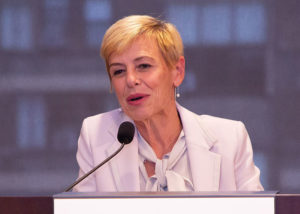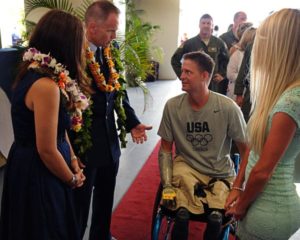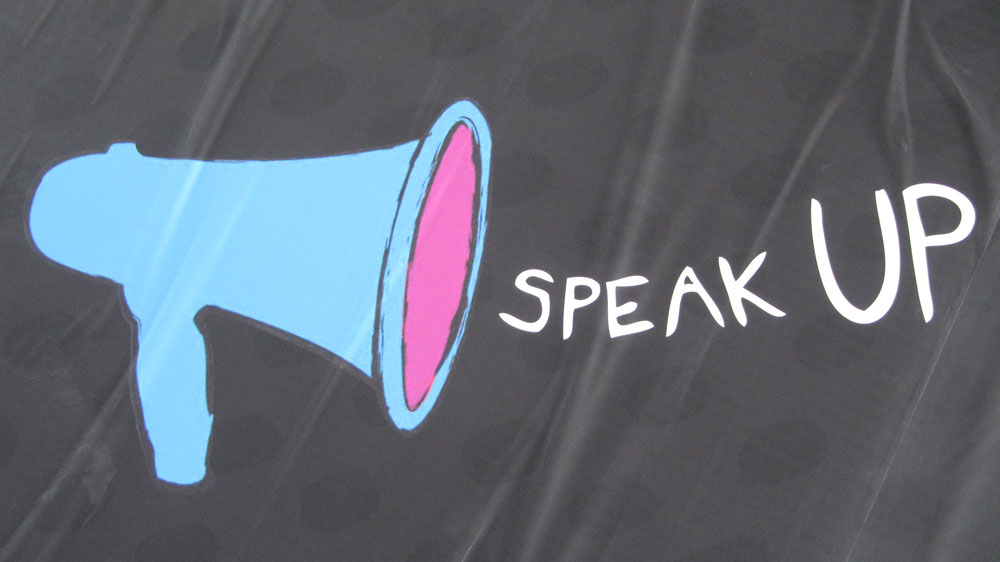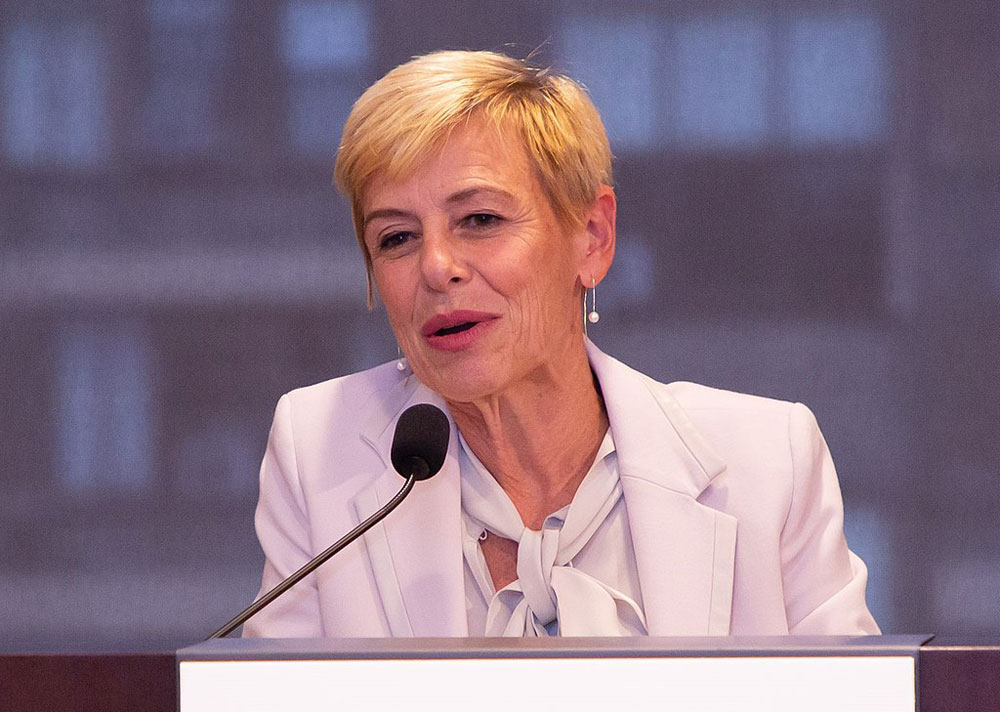
If collaboration were so natural and easy, we’d all be doing it. But it’s not. In reality, as the joke goes, collaboration is “an unnatural act between unconsenting adults.”
At the Council on Foundations’ second Joining Forces philanthropy program, some of the discussion treated collaboration on delivery of veterans services as though it were simply a matter of will combined with a little knowledge of who the players are that made it happen. The success stories shared by so many participants at the Philanthropy-Joining Forces Impact Pledge program held at the national headquarters of the American Red Cross underplayed just how damned hard collaboration really is—even within organizations, not to mention among multiple service providers and foundations, trying to improve conditions for veterans returning from Iraq, Afghanistan, and other post-9/11 military deployments.
Indeed, Veterans Affairs Secretary Bob McDonald and others from the Department talked about their commitment to partnerships, both big strategic partnerships at the national level and local partnerships on the ground. But those of us who have had experience in engaging with the VA know that “Secretary Bob,” as the affable West Pointer was introduced by Don Cooke of the Robert R. McCormick Foundation, has a huge challenge within the VA. The department is siloed by programs and by regions, often abetted by legislation that makes the siloes appear impermeable, resulting in a culture that doesn’t always work collaboratively internally, forget how it might be able to connect with nonprofit service providers at the local and state levels.
It took a surprising and disarming presentation by Brigadier General Ivan E. Denton to briefly ensure that everyone got a taste of reality. As the director of manpower for the National Guard Bureau, Denton said the Guard “has been, is, and always will be the face of the Department of Defense,” though the Guard doesn’t often take credit for it. He showed maps of an array of some 3,000 walk-in facilities, including, as he has said elsewhere, about 500 that are family assistance centers. The Guard’s centers, he said, “push” people to the VA, the Department of Labor, and to community-based nonprofits for the assistance they need, an interagency collaborative effort primarily because of the efforts of Guard counselors to link veterans to services wherever they might be found.
On the relationship with nonprofits, Brigadier General Denton pulled no punches: “I’m calling out the Department of Defense and all governmental agencies,” he said, “about what are we doing to bring in nongovernmental entities.” That’s always been one of the challenges facing the VA, a limited strategy, despite the best intents of some VA senior players, to create effective working partnerships with nonprofit service providers.
Sign up for our free newsletters
Subscribe to NPQ's newsletters to have our top stories delivered directly to your inbox.
By signing up, you agree to our privacy policy and terms of use, and to receive messages from NPQ and our partners.
Denton indicated that the national strategic partnerships are sort of easy, though it wasn’t clear whether he meant with the White House’s Joining Forces initiative or the Guard’s related program, Joining Community Forces (JCF). His point was that the various players trying to help veterans are “not plugged in and not integrated to the extent we should be,” and “where you do plug in, it’s going to be won or lost at the local level.” For all the national nonprofits participating at the Council on Foundations event, it is, as the General noted, at the local level where public-private partnerships between foundations, nonprofit service providers, the VA, and the military have to take hold.
Last year, at the first Philanthropy-Joining Forces Impact Pledge, foundations and corporations lined up to pledge $170 million in cash and in-kind gifts. With new commitments, the Council on Foundations announced on Tuesday that there are now more than $276 million in pledges for the five-year period between 2014 (when the program started) and 2019. It’s not exactly clear, though, if these philanthropic commitments from mainstream foundations like the Heinz Endowments and the McCormick Foundation, corporate funders such as JPMorgan Chase and Walmart, and the odd and sundry such as Justin Verlander’s Wins for Warriors and the WebMD Health Foundation are completely new or, in some cases, the foundations’ ongoing work in the veterans field recast for the Joining Forces Impact Pledge.
Dissecting the newness of the commitments aside, the question at hand concerns the collaborative intent of the grantmakers to build effective systems that work for the more than two million veterans that COF president and CEO Vikki Spruill said are returning home from this country’s current overseas wars. Nearly everyone at the program mentioned a “national sea of goodwill” out there to serve returning veterans, but will and intent aren’t the elements lacking in community partnerships. Retired Colonel Miguel Howe, director of the Military Service Initiative at the George W. Bush Institute, mentioned one obvious issue: the need for cultural competence. He was also candid enough to mention that it’s fine that funders demand evidence from nonprofits of their work and impact, but he reminded the funders in the audience that funders had better provide sufficient money to nonprofits to collect impact data.
Kathy Cox, a senior manager for the Walmart Foundation, said that transparency is critical. If funders and service providers cannot figure out the available resources and consequently cannot identify the gaps in them, producing a plan to address problems in the array of veteran services becomes impossible. The executive director of Zero8hundred, Sean Mahoney, described how that distinctive community integration program operates in the San Diego region, but acknowledged that collaboration is difficult when it comes to getting to veterans’ spouses and to making employers active and motivated.
It is a sea of goodwill, said Doug Wilson, the former Assistant Public Affairs Secretary for the Pentagon and the co-founder of Veterans Community Connections, but what’s not working for veterans—and consequently what’s not working in terms of collaboration—is the step of convening and working with and through programs that veterans trust. The truly best way of getting there is to have veterans themselves take substantive roles in designing and building the collaborative programs they hope will provide them with seamless, holistic services. Too many service providers look at veterans only as needy service recipients rather than people who might know a great deal about what they want and need and how to get there. That was the summary point of Kathy Roth-Douquet, the executive director of Blue Star Families. For well-designed, functioning, collaborative programs, the nonprofits and public agencies involved need to give veterans a sense of “agency,” that they can solve their own problems.
Involving clients and constituents in the design and implementation of programs they need might be the means toward making collaboration a natural, fulfilling act among knowledgeable, consensual adults.













